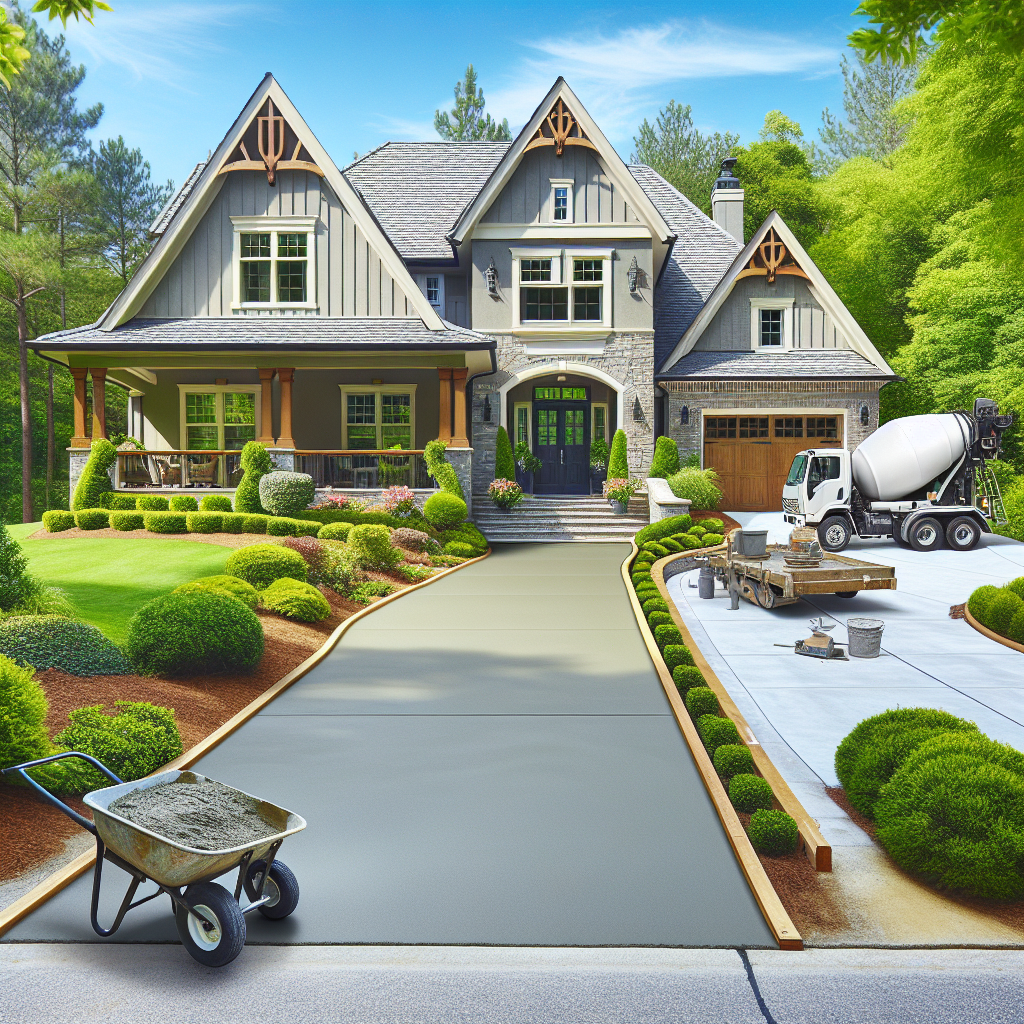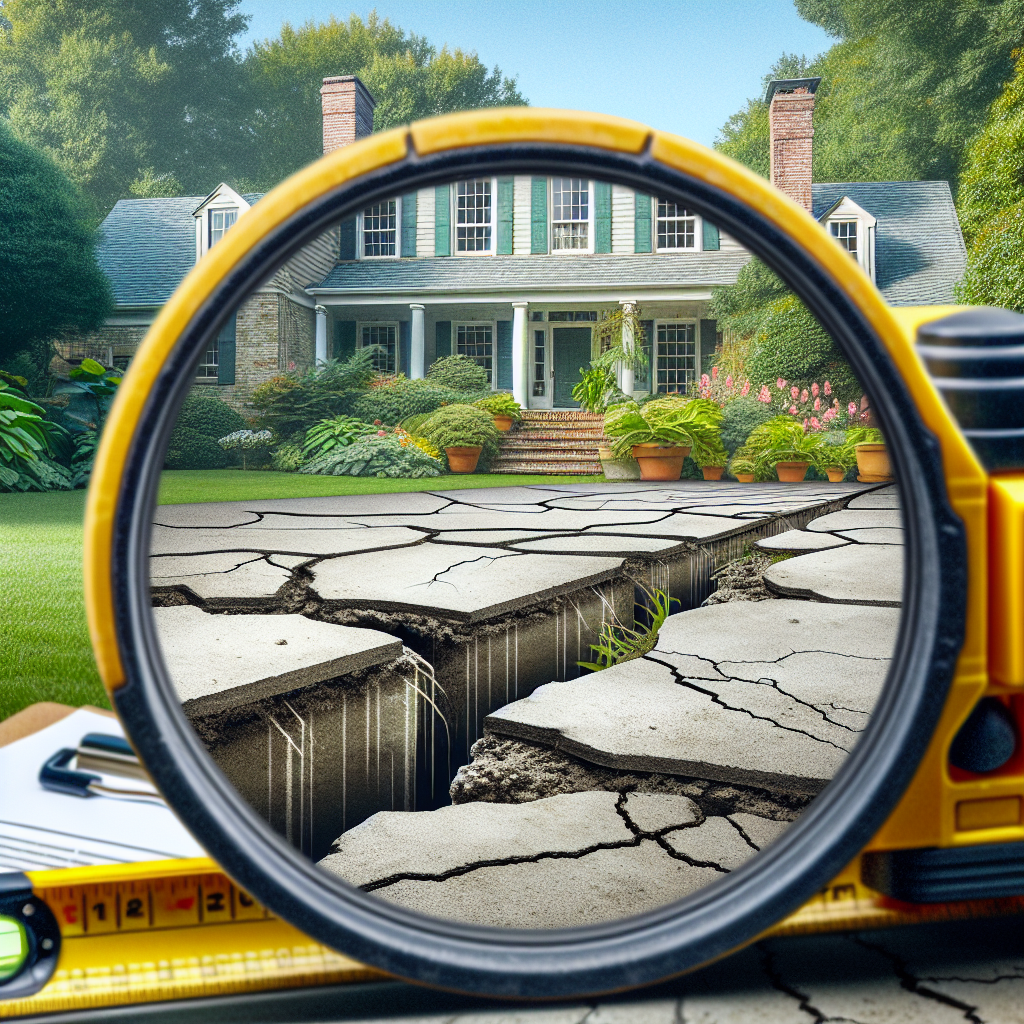Understanding Flood-Resistant Building Materials in Greenville, SC: Why Concrete is a Top Choice
In the heart of Greenville, SC, where the threat of flooding looms during heavy rain seasons, the choice of building materials can mean the difference between a secure home and significant damage. Concrete, known for its durability and resistance to the elements, stands out as a top contender for flood-resistant construction. This article explores why concrete is particularly suited for Greenville’s unique environmental challenges, enhances structural resilience, and provides insights through local case studies where concrete has proven its efficacy in flood prevention.
How Concrete Enhances the Resilience of Structures Against Floods in Greenville, SC
Concrete’s physical properties make it ideal for withstanding the rigors of floodwaters. Its impermeability prevents water penetration, reducing the risk of water damage and mold growth inside structures. Furthermore, concrete’s high mass helps in anchoring buildings securely to their foundations, minimizing the risk of displacement during severe floods. This section delves into how using concrete in construction helps maintain structural integrity even in adverse weather conditions.
Case Studies: Successful Flood-Resistant Construction Projects Using Concrete in Greenville, SC
- The Riverside Office Complex: A showcase of modern flood-resistant architecture, employing reinforced concrete walls that successfully withstood the 2015 floods.
- Greenwood Residential Development: This community features elevated concrete bases for homes, a strategic design choice that has provided effective flood mitigation during recent storms.
These examples highlight how concrete has been instrumental in building safer, more resilient communities in Greenville. By examining these success stories, potential clients can better understand the value concrete brings to flood-prone areas.

If you need help with your concrete project, reach out to Greenville Concrete Company for a free quote!
Understanding Flood-Resistant Building Materials in Greenville, SC: Why Concrete is a Top Choice
Welcome to Greenville, SC, where the charm of Southern living meets the challenges of Mother Nature! If you’ve lived here long enough, you know that being prepared for flooding is part of the lifestyle. In our quest to help you build a resilient home or business, let’s dive into why concrete is often the hero when it comes to flood-resistant building materials.
What Makes Concrete Stand Out?
When it comes to durability and resilience, concrete is a heavyweight champion. This material is not just popular; it’s a proven performer in the face of flooding. Here’s why:
- Water Resistance: Unlike wood or drywall, concrete does not rot or warp when it comes into contact with water. This property makes it an ideal choice for flood-prone areas like Greenville.
- Strength: Concrete’s inherent strength helps structures withstand not only the water itself but also debris that floods might carry with them.
- Longevity: Buildings made from concrete have a longer lifespan, even in harsh weather conditions, reducing the need for frequent repairs or reconstruction after flood events.
Concrete’s Role in Modern Building Practices
In the modern context, concrete isn’t just a material; it’s part of a smarter, more resilient building strategy. Advanced forms like reinforced concrete and precast concrete panels are enhancing how Greenville builds in flood-risk areas:
- Reinforced Concrete: By combining concrete with materials like steel, structures gain an extra layer of protection against the pressures and impacts of flooding.
- Precast Concrete: These components are manufactured in a controlled environment, ensuring consistent quality and performance, which is crucial for buildings exposed to flood conditions.
The Economic Sense of Choosing Concrete
Opting for concrete might seem like a hefty upfront investment, but let’s break down the cost-effectiveness:
- Reduced Maintenance Costs: Concrete’s resistance to moisture and decay translates to lower maintenance costs over the building’s lifetime.
- Insurance Benefits: Many insurers offer reduced premiums for concrete buildings due to their enhanced durability and safety features.
- Increased Property Value: Resilient construction can be a selling point, potentially increasing property values in flood-prone regions.
Greenville Specifics: Tailoring Concrete Use to Local Needs
Here in Greenville, we’re no strangers to the occasional deluge. By tailoring concrete applications to our specific regional challenges, we can enhance our community’s resilience:
- Elevation: Using concrete to elevate the base level of buildings, effectively reducing flood water ingress.
- Permeable Paving: Concrete solutions like permeable pavers can help manage stormwater, reducing runoff and lowering flood risks.
By choosing concrete, Greenville residents and business owners are not just selecting a building material, they are making a decision to invest in safety, dependability, and peace of mind.
Connecting with a Local Expert
If you’re considering building or renovating in Greenville, connecting with a local concrete expert can provide tailored advice and solutions. At Greenville Concrete Company, we understand the local landscape and can help guide you through the best practices for using concrete in your specific project.
Remember, choosing the right materials is more than just about aesthetics—it’s about making a long-term investment in your property’s resilience and safety. Concrete doesn’t just keep the water out; it helps keep your dreams intact.
Feel free to reach out to us or drop by. We’re here to help you build a future that stands strong against the elements!

How Concrete Enhances the Resilience of Structures Against Floods in Greenville, SC
Hey there, Greenville residents! Ever wondered why many new buildings and homes around the area seem to be sporting more concrete in their construction? Well, there’s a good reason for that, especially considering our local weather patterns and the occasional threat of flooding that comes with living near the Reedy River. Concrete isn’t just a staple for its looks; it’s a champion in boosting the resilience of structures against floods. Let’s dive into why concrete is making waves in flood-resistant building practices right here in Greenville, SC.
The Basics of Concrete in Flood Prevention
Concrete, as a material, is known for its incredible durability and strength. But when it comes to flood resistance, those aren’t the only cards it has to play. Concrete is impervious to water. When used in building foundations, walls, and barriers, it acts as an effective shield against water ingress, which is a common issue during floods. This characteristic significantly reduces the risk of water damage to a building’s structure.
Moreover, concrete has a high thermal mass, which means it can absorb and retain heat. While this is often discussed in the context of energy efficiency, during flooding, this property helps in reducing the chances of moisture-related issues like mold and mildew, which are common in wet environments.
Concrete’s Role in Modern Building Techniques for Flood Management
Modern building techniques that include concrete have transformed how structures withstand the harsh realities of flood events. Techniques such as raising building foundations above flood levels, creating sloped landscapes to direct water flow, and constructing reinforced concrete barriers are all part of the strategic approach to flood management.
- Elevated Structures: In flood-prone areas, buildings with concrete foundations can be elevated to prevent water from compromising the structure’s integrity. This method not only protects the building but also provides peace of mind to homeowners and businesses in Greenville.
- Water-Resilient Infrastructure: Concrete is often used in the construction of levees, flood walls, and other water management structures. Its ability to withstand the force of moving water without eroding is a key factor in its prevalent use in infrastructure projects throughout Greenville.
Why Greenville Builders Prefer Concrete for Flood-Resistant Buildings
In Greenville, the preference for concrete in construction isn’t just about following a trend—it’s about making smart, strategic choices for safety and longevity. Builders and architects prioritize materials that will stand the test of time and the challenges posed by local weather conditions.
Concrete’s versatility also plays a significant role. It can be molded into various shapes and forms, allowing for architectural creativity and innovation in building designs that are both aesthetically pleasing and functionally effective against floods.
Spotlight on Sustainability
It’s worth noting that concrete is not only robust in the face of floods but also offers a sustainable option for environmentally conscious building. The longevity of concrete means fewer repairs and rebuilds, which in turn, leads to a reduction in construction waste over time. Furthermore, modern advancements in concrete production have improved its environmental footprint, making it a responsible choice for the eco-friendly folks in Greenville.
Connecting With the Community
Understanding the benefits of concrete in flood resistance is more than just technical jargon; it’s about ensuring that our community remains safe and secure no matter the weather. By choosing concrete, Greenville’s residents and business owners are investing in a future where their properties are better shielded against natural disasters.
If you’re planning a new construction project or thinking about renovations, consider how incorporating more concrete elements can play a crucial role in enhancing your building’s flood resilience. After all, it’s about building smarter, not just harder!
For those in Greenville looking to dive deeper into using concrete for your next project, remember that local expertise is just around the corner. Reach out to your Greenville concrete specialists who understand both the needs of the area and the best practices in flood-resistant construction. Let’s build a safer, stronger Greenville together!
Case Studies: Successful Flood-Resistant Construction Projects Using Concrete in Greenville, SC
Hey Greenville! As we’ve all experienced, our beautiful city can be prone to some serious flooding. The good news? Concrete is coming to our rescue. Here, I’d like to dive into a few remarkable local projects that have showcased how concrete stands as a fortress against floodwaters. Whether you’re a homeowner, developer, or just a curious local, these stories will shed light on why concrete is the material of choice for flood-resistant construction right here in Greenville, SC.
The Reedy River Redevelopment Project
One of the most ambitious projects that have transformed Greenville is the Reedy River Redevelopment. Along the banks of the river, the area was once prone to flooding, affecting nearby businesses and homes. The introduction of reinforced concrete barriers and improved water channeling systems has changed the game.
- Flood Resilience: Reinforced concrete walls were constructed along critical sections of the riverbank. This not only prevents the water from overflowing during heavy rains but also helps manage the river flow more effectively.
- Community Impact: Since the completion of the project, local businesses have flourished thanks to decreased flood risk and enhanced property values. It’s a win-win for economic development and safety!
This project is a prime example of how concrete can be both functional and aesthetic, enhancing our urban landscapes while securing them against nature’s unpredictability.
The Swamp Rabbit Trail Expansion
Greenville’s beloved Swamp Rabbit Trail is not just a recreational asset but also a showcase in flood-resistant infrastructure. In its recent expansion phase, concrete was extensively used to ensure durability and resilience.
- Durability: Concrete pathways were laid down to withstand the pressures of both high foot traffic and floodwaters, ensuring a long lifespan with minimal maintenance.
- Design Flexibility: The use of concrete allowed for creative designs that blend naturally with the surrounding environment, making it aesthetically pleasing while being incredibly functional.
The expansion of the Swamp Rabbit Trail demonstrates how integrating concrete into public spaces can elevate them, providing safety and style that lasts.
The Gateway Project
Perhaps one of the most critical infrastructures in Greenville, The Gateway Project, involved extensive use of concrete to mitigate flood risks at key junctions and underpasses. Here’s how it was all put together:
- Engineering Excellence: High-strength concrete was used to construct underpasses that are resistant to flooding, even during extreme weather conditions. This ensures that one of Greenville’s busiest thoroughfares remains safe and accessible all year round.
- Long-Term Benefits: The durability of concrete means less frequent repairs and disruptions, leading to smoother commutes and lower maintenance costs. It’s an investment that pays for itself over time.
The Gateway Project is a testament to how thoughtful engineering and the right materials can create infrastructures that stand the test of time—and water!
Why These Projects Matter
Each of these projects highlights concrete’s pivotal role in flood resistance. But beyond the technical aspects, they reflect a commitment to community safety and sustainability. By choosing concrete, Greenville not only addresses immediate concerns like flooding but also invests in long-term resilience and economic stability.
For homeowners and builders, these case studies serve as proof of concrete’s value. Whether it’s a new home, a commercial building, or a community project, incorporating concrete can save money and headaches down the line.
If you’re interested in how concrete can benefit your future projects in Greenville, reach out to local experts who specialize in this durable, versatile material. Not only will you be choosing strength and durability, but you’ll also be contributing to a safer, more resilient Greenville.

Frequently Asked Questions
Why is concrete considered a flood-resistant material?
Concrete is prized for its strength and durability, making it an ideal choice in flood-prone areas like Greenville, SC. Its dense, impermeable qualities help prevent water penetration, reducing the risk of water damage during floods.
How does concrete enhance the resilience of structures against floods?
Concrete structures are able to withstand the force of moving water much better than many other materials. Its ability to resist erosion and water damage helps maintain the integrity of a building’s structure even in severe flooding.
What are some successful flood-resistant projects in Greenville that used concrete?
In Greenville, numerous construction projects have successfully utilized concrete for its flood-resistant properties. Examples include elevated roadways, reinforced flood walls, and specially designed concrete homes that have remained intact and dry during flooding events.
Are there different types of concrete suitable for flood-prone areas?
Yes, there are several types of concrete formulations designed for enhanced water resistance, such as water-resistant admixtures and high-strength concrete mixes that provide additional protection against flood damages.
Can concrete help in reducing flood insurance premiums?
In many cases, using flood-resistant materials like concrete can lead to reductions in flood insurance premiums. Buildings constructed with flood-resistant materials are often assessed at lower risk, which can be reflected in insurance costs.
What maintenance is required for concrete structures in flood zones?
While concrete is low maintenance, regular checks for cracks or erosion can help maintain its integrity, especially in flood-prone areas. Sealing and waterproofing treatments can also enhance its resistance to water damage.
How long does concrete take to install for flood-resistant structures?
The installation time for concrete structures can vary based on the complexity and scale of the project. However, concrete quickly gains strength after pouring, which can expedite construction timelines compared to other materials.
Is concrete environmentally friendly?
Concrete is often sourced from local materials, reducing transportation emissions. Modern concrete mixes also include recycled materials, enhancing its sustainability profile. However, attention to sourcing and production methods is crucial for maximizing environmental benefits.
How does the cost of using concrete compare to other building materials?
Initially, concrete might seem more expensive than some other materials, but its longevity and minimal maintenance requirements often lead to lower lifecycle costs, making it a cost-effective option for many builders and homeowners.
Why choose Greenville Concrete Company for your construction needs?
Choosing Greenville Concrete Company means opting for experience, reliability, and quality. Our expertise in flood-resistant concrete solutions provides peace of mind and ensures your project meets all local building standards and requirements.
Conclusion
In Greenville, SC, where flood risks can pose significant challenges, concrete stands out as a stellar choice for building and construction projects aimed at mitigating flood damage. Its robustness, longevity, and cost-effectiveness make it a go-to material for many architects and builders in the region. Utilizing concrete not only enhances the resilience of structures but also often leads to savings on maintenance and insurance over time.
At Greenville Concrete Company, we understand the unique challenges faced by property owners in flood-prone areas. Our extensive experience with concrete allows us to tailor solutions that meet your specific needs, ensuring your investment is protected against the elements. Whether you are planning a new construction project or upgrading an existing property, our team is here to provide the expertise and quality service you deserve.
Interested in learning more about how our concrete solutions can help safeguard your property against floods? Contact us today for a free quote and let us help you build with confidence and peace of mind. We look forward to being your trusted partner in flood-resistant construction.






